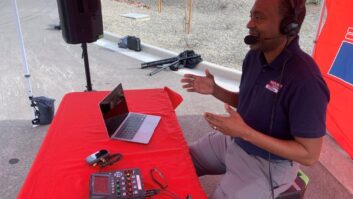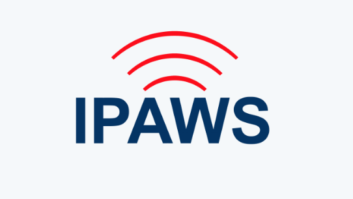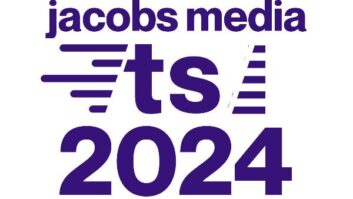The author is a freelance radio broadcast specialist.
Working on the sports coverage at the Olympics in Rio de Janeiro and the Commonwealth Games on the Gold Coast for the Australian Broadcasting Corp. was incredibly exciting as it threw up many challenges along the way. These large events require an ability to deal with multiple stakeholders, such as broadcast personnel, equipment manufacturers and telcos to ensure smooth sailing.

At the 2018 Commonwealth Games, I used Tieline’s ViA codec to broadcast live audio over IP from several venues, including high-profile sports such as events from the main stadium, as well as swimming, cycling, hockey and more in other locations.
Although ISDN was available, it was not offered at all venues by the telco, so instead of using a combination of transmission methods, I decided to stick with IP. In general, I prefer to transport audio over IP rather than ISDN, as it’s more versatile and is just as reliable with the right implementation.
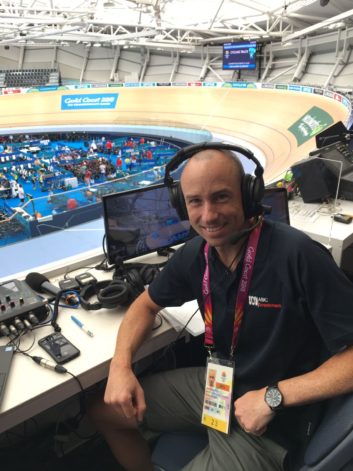
The ABC Radio Sport Operations department has a large complement of ViA, Merlin and Merlin PLUS codecs for remote outside broadcasts. This is significantly extended in ABC MCRs with complements of Merlin PLUS codecs. My own broadcast company, BNBC, has also purchased several ViA, Merlin and Merlin PLUS codecs, which are primarily used for sports broadcasting. These complements are constantly growing as the industry transitions to IP technology.
At the Commonwealth Games, I installed four Tieline ViA codecs at key venues and had one floating codec, which was used at other venues and pop-up events around the city. Most venues had a simple setup for two commentators and an effects mic. IP network security was high, with all venues isolated from one another on private LANs. In the lead-up to the opening, we worked hard to negotiate secure pathways in and out from each venue that were rock-solid back to Merlin and Merlin PLUS codecs in the ABC’s Central Broadcast Site at the IBC Gold Coast Convention and Exhibition Centre.
The purpose of this infrastructure was to connect all venues directly to the International Broadcast Centre, which would then get mixed into larger broadcasts and sent back to Sydney. Two different radio networks would often be programmed from the IBC site with different content through the same infrastructure. This IBC hub was also great for providing atmosphere and camaraderie with all contributing producers, commentators and experts in close proximity.
EXPECT THE UNEXPECTED
As we found in Rio, the best-laid plans can often turn to you-know-what, no matter how much planning you put in. On the Gold Coast that turned out to be another layer of security added to the IP network. An Intruder Protection System was installed because of a possible threat received only 30 hours before the opening ceremony.
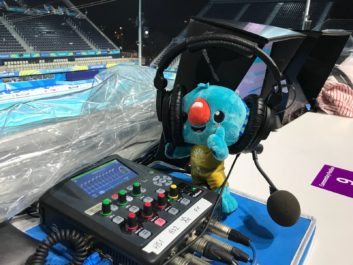
This added latency. Because we were concerned about it being 100% OK for the opening ceremony, we decided to go live with the addition of Telstra LANES cellular service, which uses dedicated LTE spectrum. To facilitate this, we connected Netgear M1 Nighthawk routers to the venue ViA and the IBC Merlins’ second LAN ports and setup Tieline’s SmartStream feature on all our codecs.
Combined with Tieline’s SmartStream PLUS redundant streaming, we streamed successfully from all venues for two-and-a-half days — until we were absolutely certain that the private LAN with additional security would stream reliably. The performance was great, and it allowed us to troubleshoot the private LAN issues without impacting the product.
SmartStream PLUS used via two different networks is the best option, in my opinion, and gets you a lower than one in 1,000 failure rate in my experience. Normally, I try to combine an LTE cellular modem and a wired LAN service for redundancy.
I met some colleagues from BBC Sports Northern Ireland during the games who were interested in trying out the SmartStream method of IP broadcasting, and I helped them to configure their ViA codecs for broadcast, as well as talking about our IP issues.
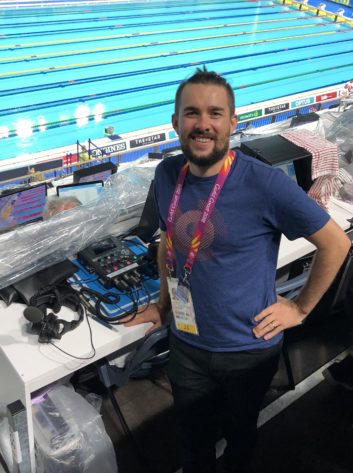
One of the main reasons I like using ViA is the remote control it delivers. At the venues on the Gold Coast, we didn’t have any technicians on site during competition, as we could remote into each codec and adjust any settings from the studio using the HTML5 Toolbox web GUI while managing larger broadcast operations at the IBC. The Matrix editor and router are a nice addition to ViA and allow simple routing adjustments on the fly.
Generally, the return path is used for IFB and talkback communications; however the fact that ViA supports a separate mono bidirectional feed for communications is something I am looking into for radio sports coverage. ViA’s IP latency is low and well-suited to communicating bidirectionally with the studio. Depending on the circuit available, I generally run a fixed jitter setting on international circuits and automatic jitter buffering on local and national links as international circuits tend to be vary more dynamically over the period of a connection.
I have connected in mono, stereo, and both stereo and mono simultaneously using ViA — depending on the application. Normally, I use Music PLUS encoding in stereo at 96 kbps, and this sounds excellent.
I generally avoid using Wi-Fi at major sports events, as stadiums often use lots of Wi-Fi channels and there can be too much interference for reliable connections. However, I have used the built-in Wi-Fi capability in ViA in areas less affected by Wi-Fi and RF, like local football matches at smaller venues with fewer broadcasters. It’s easy to setup and works great.
I have had the opportunity to use both the XLR and digital outputs to feed things like PA, but by far the most useful use for the additional audio IO is to daisy-chain two ViAs together. This is great for OBs where space is an issue.
BATTERY BACKUP SAVES THE DAY
I recall on one occasion that ABC Radio Sport was broadcasting a Women’s AFL match from Drummoyne in Sydney during the 2018 season. Storms were predicted, and we were outside under a small gazebo (as were all the other broadcasters). We were using the ViA as an external codec and simply taking feeds in and out from a larger mixing console.
Midway through the game, it bucketed down, cats and dogs, sideways rain. Insanity. All the gear got soaked, and lightning began striking nearby structures and sailing boats. I had anticipated such an issue and disconnected the ViA and Netgear M1 modem from the larger system, swapped the commentators over to headsets plugged directly into the ViA and moved them inside, away from the storm. Although other broadcasters had gone off air due to wet equipment, we were able to continue to broadcast.
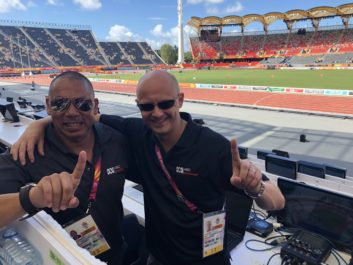
This was great for our listeners because we didn’t drop the coverage, and it provided an exciting listening experience throughout the storm with the reactions of the commentators as they spoke through the ordeal. After play resumed, we continued to broadcast using the ViA. In addition, I swapped out our sideline wireless mic and used a phone/mic/headphone combo with Report-IT directly back to the studio.
SUMMARY
Without question, Tieline’s Merlin codecs in Rio, and the ViA, Merlin and Merlin PLUS codecs on the Gold Coast, delivered the goods for high-profile, mission-critical, sports coverage.
In general, the ViA codec sounds great, and from a configuration perspective, it’s very intuitive. Announcers like the ViA as they are super easy to use and connect once an address book for program dialing has been configured. The headphone routing controls are also super-flexible and settings for individual announcers can be saved and recalled.
[Read: IBC Exhibitor Viewpoint: Charlie Gawley, Tieline]
Unlike ISDN, broadcasting over IP can be dicey, as you are relying on other factors outside of a single telco. IP requires good network structures all the way through the chain and can often mean crossing three computer networks (organizational, internet, telco). This is why Tieline’s SmartStream PLUS is such an important feature, really providing what ISDN used to, with the added flexibility of computer networks.
Joshua Craig works as an audio engineer for clients including the national broadcaster ABC TV and Radio, Triple J Radio, the Sydney Opera House and many others. The work he does is varied and includes live sports coverage and live music programs.





